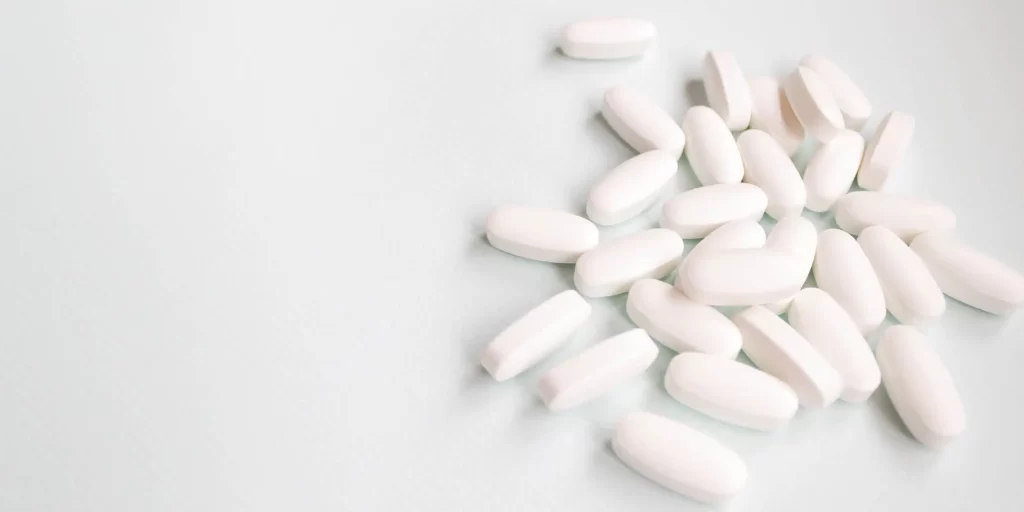Ultram Overdose – Signs, Symptoms & Treatment Options
Written by Megan Hull
& Medically Reviewed by Dr. Annie Tye, PhD
Medically Reviewed
Up to Date
Last Updated - 6/17/2022
View our editorial policy
Ultram, also known by the generic name tramadol, is a powerful opioid narcotic that also acts as a serotonin-norepinephrine reuptake inhibitor (SNRI). Ultram is one of the most popular prescription opioids, in part because it was once thought to have a lower risk of developing dependence and addiction. However, Ultram has been shown to have a similar risk for addiction as other opioids. Recently, the FDA mandated that a “black box” warning, a statement identifying drugs that have serious risks associated with use, is required to be included on Ultram packaging, underscoring the potential for addiction, abuse, misuse and overdose.
Can You Overdose on Ultram?
Yes, Ultram overdoses are certainly possible, and risk of overdose increases markedly when Ultram is used with other central nervous system depressants, including alcohol, benzodiazepines, other opioids and many over-the-counter (OTC) drugs. Ultram is unique among opioids in that it inhibits serotonin and norepinephrine signaling in the brain, so taking Ultram in conjunction with other drugs that affect serotonin or norepinephrine levels can have negative consequences. If you are taking prescription or OTC drugs, make sure to discuss them with your doctor before you start taking Ultram.
Initial Ultram doses start at 25 mg/day, with increases of 25 mg/day in separate doses (if needed) for three days so that by the fourth day on a prescribed regimen the total dose is 100 mg/day (25 mg four times per day). If pain remains severe, Ultram dose may be incrementally increased, not to exceed 400 mg/day. Adverse effects caused by Ultram have been noted at very low doses (even 25 mg has caused dizziness and lightheadedness in some people). Ultram can affect people differently, so it is important to follow prescribed dosing instructions and not increase doses without getting approval from your doctor to prevent overdose.
Ultram Overdose Symptoms
Like other opioids, Ultram acts as a central nervous system (CNS) depressant. Overdose symptoms commonly include lethargy, drowsiness, muscle weakness, cold and clammy skin, stupor and constricted pupils. In extreme cases, Ultram overdose symptoms include respiratory depression (inability to breathe effectively), pulmonary edema (fluid in the lungs), bradycardia (slow heart rate), arrhythmia (irregular heartbeat), hypotension (low blood pressure) and seizures, all of which can be fatal if untreated. Extreme cases of Ultram overdose are often associated with concurrent use of other CNS depressants, such as alcohol, benzodiazepines, other opioids and OTC sleeping pills.
Because Ultram inhibits serotonin and norepinephrine signaling in the brain, it is associated with risks that other opioids are not. Even when Ultram is taken as prescribed, the use of other drugs that affect serotonin signaling can have negative health outcomes. Serotonin syndrome is caused by excessive serotonin in the brain, and symptoms include trembling, nausea, hyperthermia, rapid heart rate and, in severe cases, seizures, coma and even death.
Ultram Overdose Prevention
The most reliable way to prevent an Ultram overdose is to not take the drug. If you have been prescribed Ultram, take it exactly as prescribed, erring on the lighter side of the dose if possible. Never take Ultram in greater quantities or more frequently than prescribed. If you do not have a current prescription, do not take Ultram.
Combining Ultram with other drugs or alcohol has been proven to be dangerous, even lethal. Never take Ultram with alcohol or illicit drugs. Even prescription and over-the-counter drugs can interact with Ultram, so it is imperative that your doctor be aware of all other drugs you may take while using Ultram to avoid unexpected side effects. Among the drugs that commonly interact with Ultram are antidepressants, anti-anxiety medications, migraine medications, MAO inhibitors, St. John’s wort, and sleeping pills.
Ultram Overdose Treatment
Ultram overdose is a medical emergency that should be addressed by medical professionals. If you suspect an overdose, call 911. The first priority in treating overdose is to ensure that the patient can breathe. Assisted or controlled ventilation may be required to prevent damage or death from lack of oxygen. Cardiovascular irregularities (bradycardia or arrhythmia) may require advanced life support.
Naloxone is an opioid antagonist, meaning that it interferes with the actions produced by opioids. Naloxone is commonly used in cases of opioid overdose, but Ultram overdose symptoms have been shown to be less affected by naloxone administration than some other opioids. This may be due to the SNRI effects of Ultram. Some evidence suggests that naloxone treatment for Ultram overdose is also associated with an increased risk of seizures, although these findings are inconsistent.
If you or a loved one is struggling to overcome Ultram addiction, we can help. Our multidisciplinary team of experts is experienced in addressing all aspects of Ultram addiction, withdrawal and recovery. Call The Recovery Village Ridgefield today to learn more about our treatment programs.
Sources
Food and Drug Administration. “Ultram.” August 2017. Accessed August 6, 2019.
Rehni, Ashish K. et al “Tramadol‐Induced Seizurogenic Effect: A Possible Role of Opioid‐Dependent γ‐Aminobutyric Acid Inhibitory Pathway.” Basic and Clinical Pharmacology, August 2008. Accessed August 6, 2019.
Takeshita, Junji, et al. “Serotonin Syndrome Associated With Tramadol.” The Primary Care Companion to The Journal of Clinical Psychiatry, 2009. Accessed August 6, 2019.
Baxter, Karen, et al. “Drug interactions that can occur with St John’s wort.” The Pharmaceutical Journal, January 2008. Accessed August 6, 2019.
Eizadi-Mood, Nastaran, et al. “Does Naloxone Prevent Seizure in Tramadol Intoxicated Patients?” International Journal of Preventive Medicine, March 2014. Accessed August 6, 2019.
View Sources
Food and Drug Administration. “Ultram.” August 2017. Accessed August 6, 2019.
Rehni, Ashish K. et al “Tramadol‐Induced Seizurogenic Effect: A Possible Role of Opioid‐Dependent γ‐Aminobutyric Acid Inhibitory Pathway.” Basic and Clinical Pharmacology, August 2008. Accessed August 6, 2019.
Takeshita, Junji, et al. “Serotonin Syndrome Associated With Tramadol.” The Primary Care Companion to The Journal of Clinical Psychiatry, 2009. Accessed August 6, 2019.
Baxter, Karen, et al. “Drug interactions that can occur with St John’s wort.” The Pharmaceutical Journal, January 2008. Accessed August 6, 2019.
Eizadi-Mood, Nastaran, et al. “Does Naloxone Prevent Seizure in Tramadol Intoxicated Patients?” International Journal of Preventive Medicine, March 2014. Accessed August 6, 2019.
Authorship






